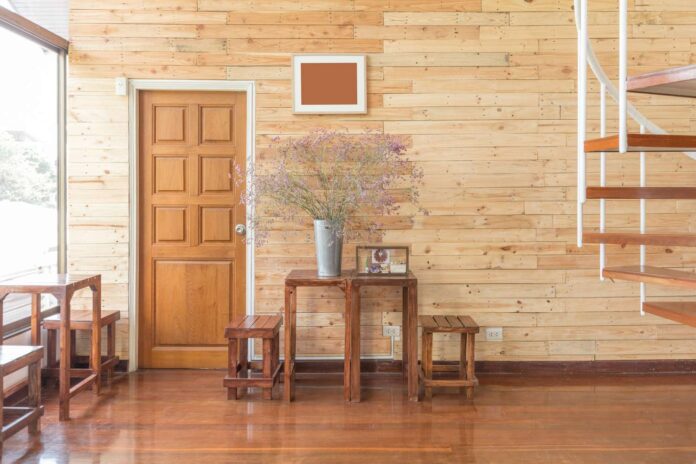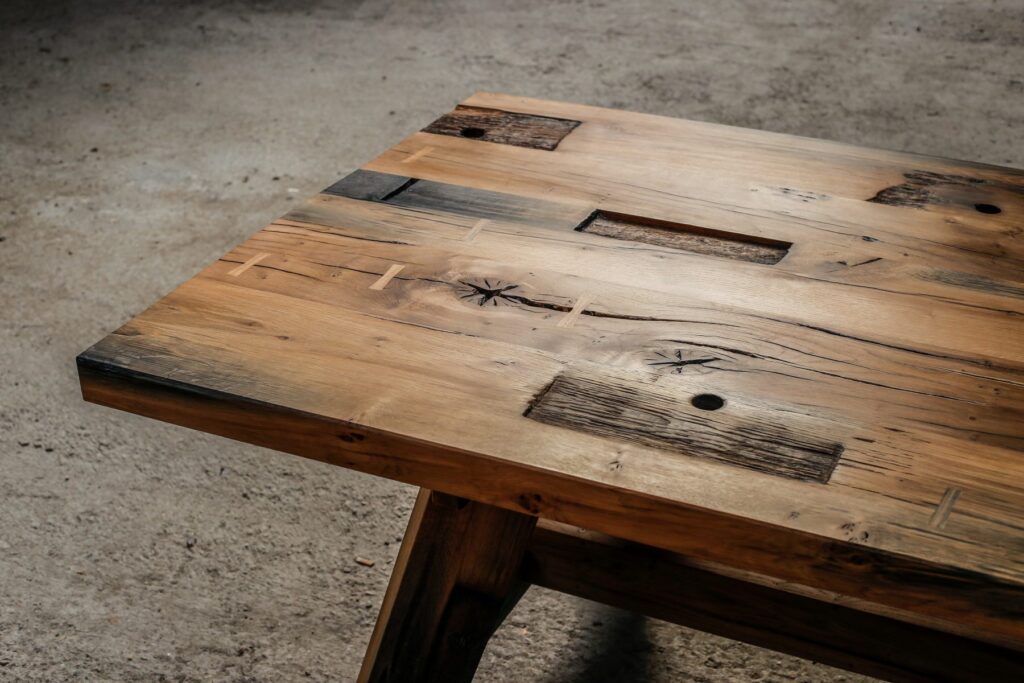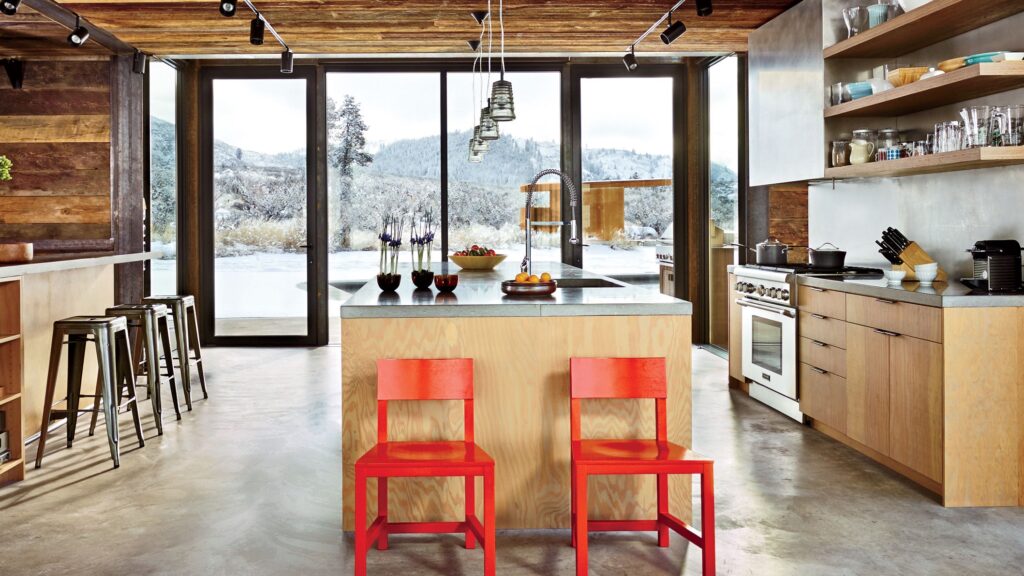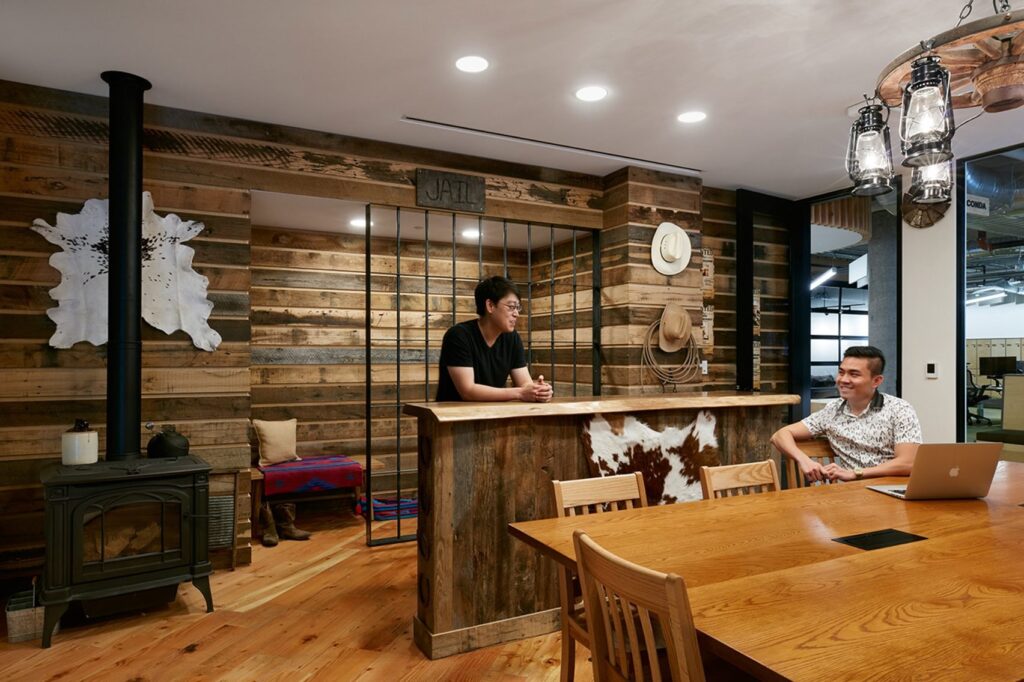
In the realm of design, a new trend has emerged that marries sustainability with style, creating spaces that are not only aesthetically pleasing but also environmentally conscious. The use of reclaimed wood in design has gained popularity for its unique charm, eco-friendliness, and ability to imbue spaces with warmth and character. This article delves into this fusion of aesthetics and eco-consciousness, exploring the beauty, benefits, and versatility of incorporating reclaimed wood into various design projects.
The Beauty of Reclaimed Wood

Reclaimed wood tells a story—a story of history, character, and resilience. Each piece carries the marks of its past life, from weathered textures and aged patinas to distinctive grains and knots. This inherent beauty is what sets reclaimed wood apart, infusing spaces with a sense of authenticity and timelessness that cannot be replicated with new materials. Whether used in flooring, furniture, accent walls, or architectural details, reclaimed wood adds a rustic elegance and natural allure to any design scheme.
The Eco-Conscious Choice
Choosing reclaimed wood over newly sourced timber is an environmentally responsible decision with significant benefits. By repurposing wood from old structures, barns, and factories, designers help reduce demand for virgin timber, thereby preserving forests and habitats. Additionally, reclaiming wood prevents it from ending up in landfills, where it would contribute to waste and environmental degradation. This commitment to sustainability aligns with the growing movement towards eco-friendly practices in design and construction.
Versatility in Design Applications

Reclaimed wood is a versatile material that can be utilized in a myriad of design applications, offering endless creative possibilities. Some popular uses include:
- Flooring: Reclaimed wood flooring adds warmth and character to interiors, creating a cozy atmosphere.
- Furniture: From tables and chairs to shelving units and bed frames, reclaimed wood furniture pieces are both functional and visually striking.
- Wall Cladding: Accent walls clad in reclaimed wood provide a focal point and texture to spaces, elevating their visual appeal.
- Decorative Elements: Beams, mantels, doors, and trim crafted from reclaimed wood introduce architectural interest and a sense of history to homes and commercial spaces.
Benefits Beyond Aesthetics

The allure of reclaimed wood extends beyond its visual appeal. Additional benefits include:
- Durability: Reclaimed wood, often sourced from old-growth trees, tends to be denser and more resilient than new wood, ensuring longevity in design installations.
- Uniqueness: Each piece of reclaimed wood is one-of-a-kind, with its own story and characteristics, adding a layer of individuality to design projects.
- Carbon Footprint Reduction: By using reclaimed wood, designers contribute to carbon sequestration and reduce greenhouse gas emissions associated with logging and processing new timber.
Farmhouse Front Doors Enhanced with Reclaimed Wood
In the world of design, the entrance of a home makes a profound statement about its character and the tastes of those residing within. Farmhouse front doors crafted from reclaimed wood are rapidly becoming a favored choice for homeowners seeking to infuse their entryways with charm, warmth, and a nod to rustic elegance. These doors, rich in history and texture, instantly elevate the façade of a property, blending seamlessly with the natural surroundings while also standing out as a piece of art in their own right.
The use of reclaimed wood in farmhouse doors not only showcases an appreciation for sustainable materials but also introduces a distinctive touch that sets homes apart. This sustainable choice highlights a commitment to eco-conscious living, all while maintaining a stylish, inviting entrance that warmly greets every visitor.
Embracing Sustainable Design Practices
Integrating reclaimed wood into design projects exemplifies a commitment to sustainable design practices. It signals a respect for nature, a reverence for history, and a dedication to creating spaces that are both visually captivating and environmentally responsible. As the design industry continues to prioritize sustainability and ethical sourcing, reclaimed wood emerges as a timeless and versatile material that embodies these principles while enhancing the aesthetic appeal of interiors and exteriors alike.
By choosing reclaimed wood, designers and homeowners alike can transform spaces into havens of beauty, warmth, and eco-consciousness. With its rich history, unique aesthetic, and positive environmental impact, reclaimed wood stands as a testament to the power of repurposing and renewing resources for a more sustainable future. Embrace the allure of reclaimed wood in your next design project and let its natural beauty and eco-friendly ethos elevate your space to new heights of sustainability and style.








